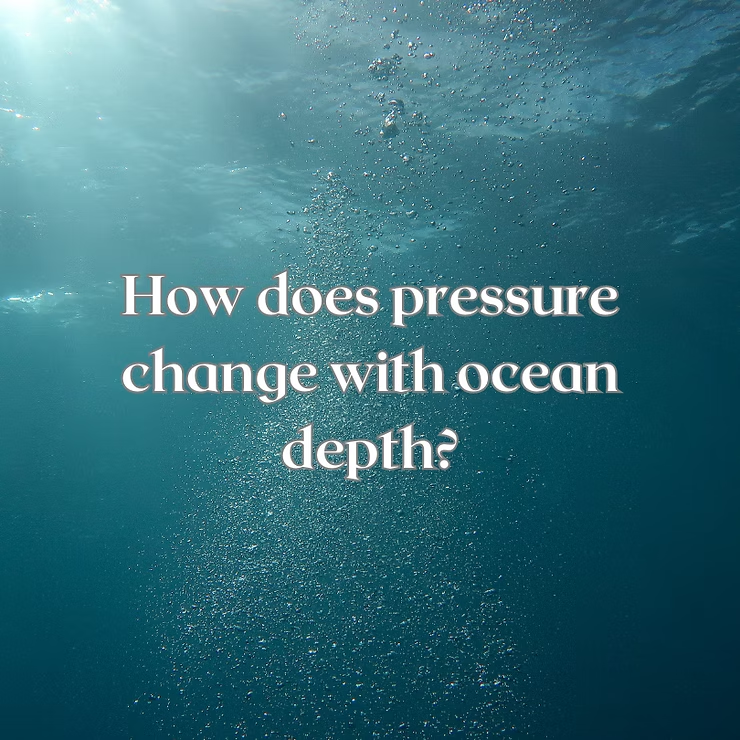Understanding Ocean Pressure
What Is Pressure?
Pressure is the force applied per unit area. In the ocean, it increases with depth due to the weight of the water above. For every 10 meters of depth, pressure rises by roughly 1 atmosphere. At 100 meters, this is 10 times the surface pressure.
Atmospheric Pressure
Atmospheric pressure is the force exerted by air above us. At sea level, it averages 101,325 pascals (14.7 psi). Pressure decreases with altitude and varies with weather patterns, affecting daily life, aviation, and diving.
Pressure and Depth
As depth increases, the ocean exerts greater pressure. Specialized submersibles are designed to withstand these extreme forces, while deep-sea creatures have adapted with flexible bodies, pressure-resistant tissues, and slow metabolisms.
| Depth (m) | Pressure (atm) |
|---|---|
| 0 | 1 |
| 100 | 11 |
| 200 | 21 |
| 300 | 31 |
| 400 | 41 |
Effects on Humans and Creatures
- Human Body: Increased pressure affects lungs, ears, and blood circulation, with risks like decompression sickness.
- Deep-Sea Creatures: Adaptations include bioluminescence, gigantism, pressure-resistant bodies, and slow metabolism to survive extreme depths.
Impacts on Submersibles
Submersibles face immense stress at extreme depths. Hulls must be reinforced, electronics sealed, and buoyancy carefully managed. Advances in materials and design allow safe exploration of the deep ocean.
Exploration Techniques
- Scuba Diving: Uses self-contained underwater breathing apparatuses; suitable for shallow and moderate depths.
- Submersibles: Pressure-resistant vehicles for deep-sea exploration, often equipped with cameras, sonar, and robotic arms.
- ROVs & AUVs: Remotely operated or autonomous vehicles extend research to previously unreachable depths.
Challenges of Deep-Sea Exploration
Exploring the deep sea involves extreme pressure, darkness, low temperatures, and communication difficulties. Innovative technology is essential to overcome these obstacles and gather accurate data.
Future of Oceanic Research
Advancements in autonomous vehicles and deep-sea imaging are expanding our understanding of ocean ecosystems. Research on bioluminescence and extreme-pressure adaptations promises insights into marine biology, environmental monitoring, and climate studies.
Conclusion
Ocean pressure increases dramatically with depth, influencing humans, marine life, and technology. Understanding these dynamics is critical for safe exploration, engineering innovations, and advancing scientific knowledge of the deep sea.
Frequently Asked Questions
- How does pressure change with depth? Pressure increases roughly 1 atm per 10 meters of ocean depth.
- Why does pressure increase? The weight of the water above adds force to objects below.
- How does pressure affect humans? It impacts lungs, ears, circulation, and can cause decompression sickness.
- How do deep-sea creatures adapt? They have pressure-resistant bodies, bioluminescence, slow metabolism, and flexible structures.
- What equipment is used for deep-sea exploration? Submersibles, ROVs, AUVs, and specialized diving gear.
- What challenges exist in deep-sea exploration? Extreme pressure, darkness, low temperatures, and communication limitations.
- Future of oceanic research? Enhanced technology enables deeper exploration, ecological studies, and understanding of climate impacts.

